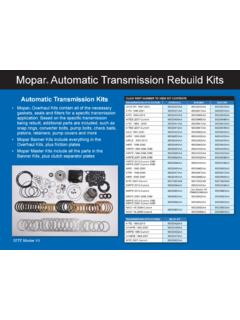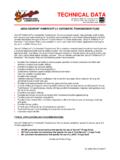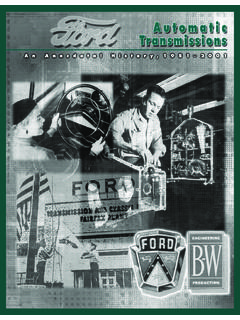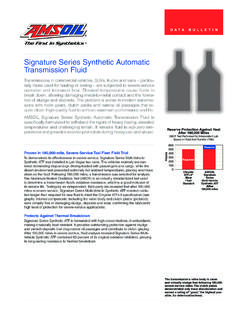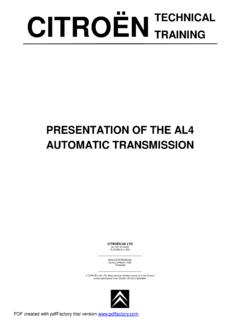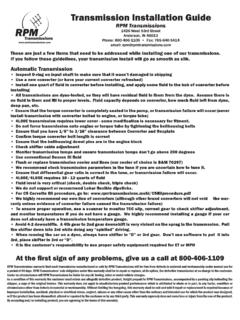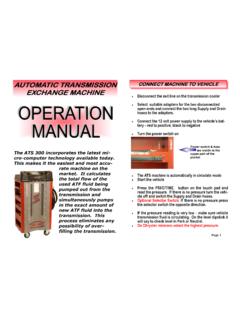Transcription of AUTOMATIC TRANSMISSION GEAR INDICATOR …
1 This article is 2000 by the 928 Owners Club; all rights reserved. Specifically, no one may republish, sell, or otherwise use this article for other than personal purposes without explicit written article is provided solely as friendly advice; neither the author nor the 928 Owners Club takes or accepts any responsibility for the outcome of any work done by those reading this article. No attempt is made to represent or supersede any third party, specifically Porsche Cars North America or Porsche TRANSMISSION gear INDICATOR LIGHT REPLACEMENTEarl Gillstrom and Gary Knox - 928 Owners Club--------------------------On 928s with AUTOMATIC transmissions , Porsche put repeater lights at the end of the tachometer s sweep toindicate what gear you're in (this leads some enthusiastic 928 racers to talk about shifting at P ).
2 Theselights sooner or later stop working, leading to some guesswork, particularly at night. This article describesour procedure (as done on an '87 S4) for replacing these task is somewhat complex and requires careful work, but is otherwise very doable . We developedthis procedure out of necessity; the P and D lights in Gary's '87 S4 both failed at about 84,000 miles whenthe instrument panel was shipped via UPS for odometer repair. These are apparently the only two that failat all early, as they are the most frequently , here goes, step by step.
3 Pardon the lack of photos; we did it, then realized that pictures might havebeen nice, but hope that we've made the text clear enough to make up for the instrument pod from the car (there are other writeups available for this, seek out the onethat works for you and your car). the pod upside down, remove the two bolts on each end of the instrument panel. A 5 mm Allenwrench or socket is required to remove these. As these bolts are different, we recommend that afterremoval, you re-insert each bolt back into the pod at its respective end to minimize errors in replacingthem.
4 In addition, Gary strongly recommends that you make an alignment mark on the offset cam andaluminum piece on the right side of the pod and on the attachment point at the pod before looseningthat bolt. This will allow you to relocate it in exactly the same position when reattaching the instrumentsto the pod. Trying to correctly orient this piece and tighten the bolt while you are installing the pod intothe dash is a real pain - BTDT! the nine Phillips-head screws around the perimeter of the back side of the instrument lift the instruments away from the frame and the transparent front glass.
5 Pull the pigtail ofeight insulated wires through the opening in the back of the Gillstrom and Gary KnoxAUTOMATIC TRANSMISSION GEARINDICATOR LIGHT are three slot head screws and five 8 mm hex nuts holding the tachometer to the back side ofthe instrument panel. Remove all these screws and hex nuts. Carefully hold the tachometer so it doesnot fall away from the frame, then carefully pull it away from the frame, gently removing the eight-wirepigtail from the slot bracket in the frame and feeding it out through the opening on the right side of remove the three screws on the back side of the tachometer and the two screws on the outeredge of the front face (DO NOT TURN the two screws on the back side that are recessed into smallholes in the frame itself).
6 This will allow you to slightly separate the tachometer head from its the tachometer head slightly off its frame, then use small needle-nose pliers to remove the fiveconnectors for the small insulated wires from their respective connecting posts, which are on theopposite ends of the five hex nuts you removed in Step 4. Note which wire goes to which post forproper the tachometer upside down on a frame that will support it without damaging the dial face orneedle. We used a piece of 4" PVC pipe coupling; we attached three or four pieces of masking tape tothe back side of the tachometer and the sides of the coupling to provide a fairly rigid work you can see the six VERY small incandescent lights that illuminate the PRND32 figures on theright side of the tachometer.
7 These are 12-volt bulbs, so, using a 12-volt DC power source, you canCAREFULLY (the leads are fragile) make contact on each side of the leads of each bulb for finalverification of exactly which bulbs are burned the burned out bulb(s) by using small, sharp side-cutters to cut the leads at the surface of thecircuit board. Do this carefully, and protect your eyes and face when cutting the second lead on eachbulb as they tend to fly up from the cutting Now you are ready to solder the replacement bulb(s) in place. We used Mini Lamps from RadioShack.
8 These are 12 volt, 25 mA bulbs (Radio Shack part number 272-1141A, cost about $ each).They have slightly larger glass envelopes than the original Porsche bulbs, but fit nicely in the slotsprovided. Use clear bulbs in all slots, as the green color of the D INDICATOR is due to a green filter in thetachometer face. When installed, these bulbs provide illumination at least 90% as bright as the We left pigtails about one inch long on all the leads, then stripped them back about 1/8" (these smalldiameter wires require specially sized strippers or very careful knife work), then placed the copperleads horizontally across the solder joints where the original bulbs had been cut out.
9 We DID NOTinsert the bulbs into the slots at this time. We then soldered each bulb's leads in place; this requires a3 Earl Gillstrom and Gary KnoxAUTOMATIC TRANSMISSION GEARINDICATOR LIGHT REPLACEMENT--------------------------sma ll-tip 25-30 watt soldering iron*, small-diameter solder wire, small needle-nose pliers to hold thepigtails in place, and three or four very steady each bulb's leads were soldered in place, we checked to see there was no bridging of the solder(that is, solder inadvertently reaching a neighboring connection)
10 , then verified that the contacts weregood and bulbs operating by using probes from a 12-volt source to touch the fresh solder on each sideof the connection. After verification, we carefully placed each new bulb in its proper slot, used a littleRTV to permanently position the bulb, then smiled in relief!13. We cleaned all electrical contacts, then reassembled the instruments, starting with Step 6 above andworking back through Step 1. After all of the instrument panel is reassembled, you might considertaking out the three light bulbs at the bottom of the panel (larger black sockets, each takes about aquarter-turn counterclockwise to remove) and dusting them off for brighten the illumination.
